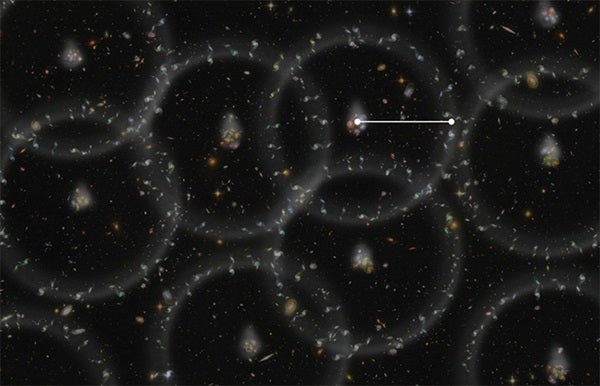The August 2015 issue of Astronomy takes readers inside “Kitt Peak Observatory’s second chance at life,” which is banking on a powerful tool called the Dark Energy Spectroscopic Instrument. Astronomers hope this intense survey will help them study one of the most mysterious forces known, dark energy, and lead to a better understanding of cosmic structure thanks to sound waves from the beginning of time. Finding the remains of these ripples, called baryon acoustic oscillations (BAOs), will give them a cosmic ruler to measure the distance between galaxies.
In “How astronomers measure the cosmos,” C. Renee James explains in detail how astronomers are using these BAOs to find the universe’s expansion rate today.










